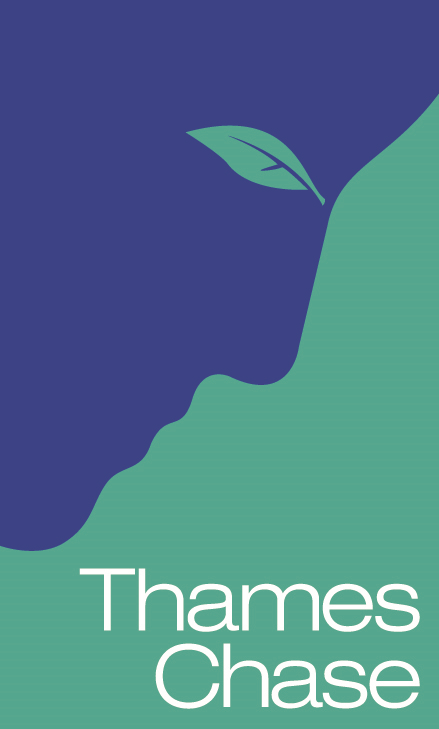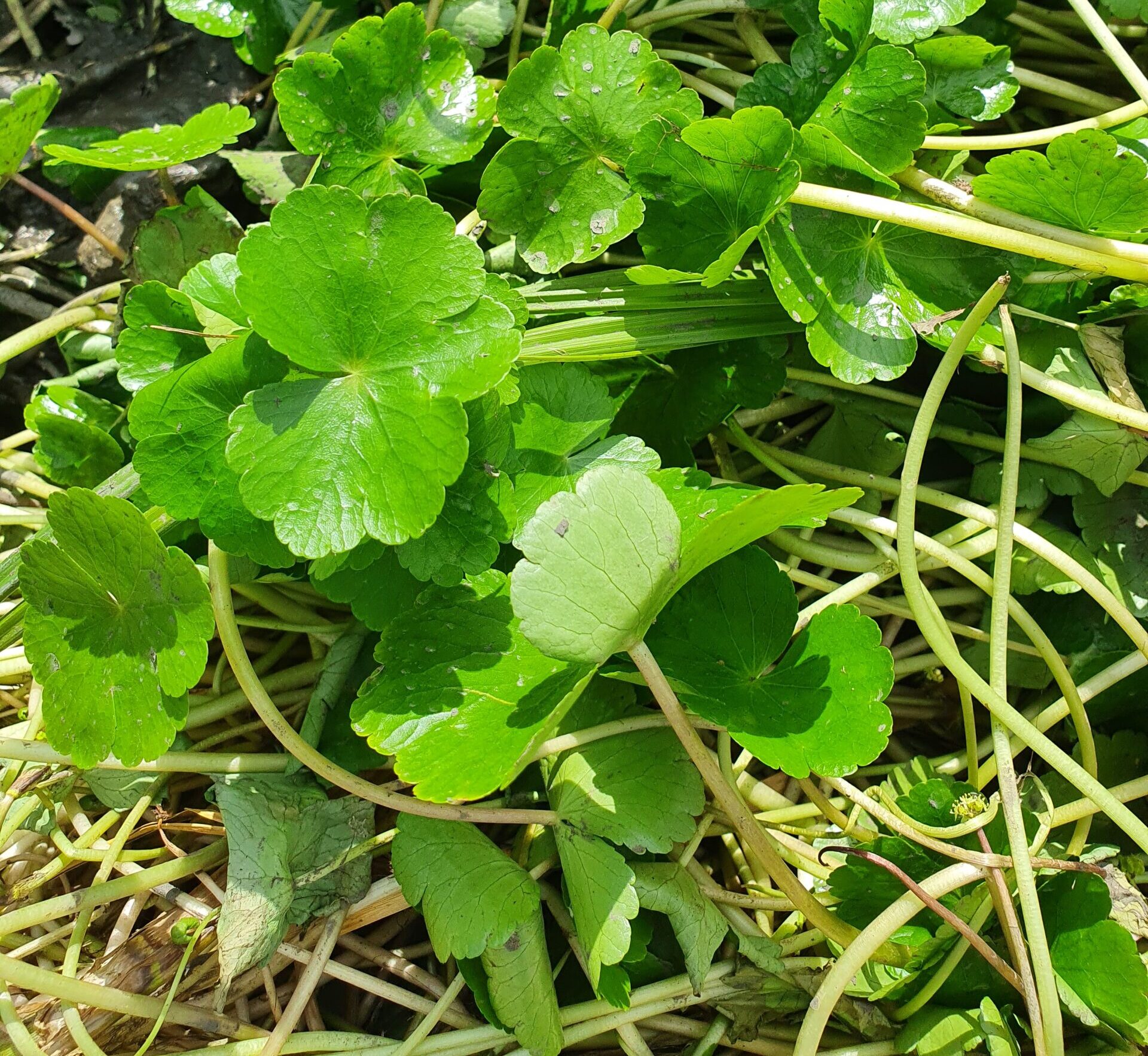
Floating Pennywort
Floating pennywort is a species of plant that is native to North America. The species was first bought to the UK as part of the aquatic plant nursery trade, and was first recorded in the wild in 1990. Since then, the plant has rapidly spread across Britain, establishing itself as a highly invasive and problematic non-native species that is capable of growing from a finger nail size fragment. Found across all types of freshwater environments, the plant grows in dense floating mats that will easily cover an entire lake, pond or river channel. These mats will choke a water body of light and oxygen, greatly impacting upon the native species and the natural functioning of these systems. The plant can also increase flood risk by blocking flood channels and impeding the flow of water. Floating mats of pennywort can become so dense that they can be mistaken for solid ground, presenting a risk to people, dogs and other animals who may inadvertently step into the water.
Unfortunately, the River Mardyke has also suffered from the introduction of this invading plant species. A key challenge for managing the plant is that no single land organization or landowner bears responsibility for its removal, meaning partnership working is key to a successful management programme. In 2020, the South Essex Catchment Partnership, Thames21 and the Land of The Fanns Landscape Partnership Scheme began discussions around a long term plan to manage and remove floating pennywort from the River Mardyke with the ambitious goal of entirely eradicating it from the river.
It is vital that any pennywort management project works downstream from the source of the plant, otherwise efforts to remove it would ultimately be futile as upstream populations would recolonise cleared downstream areas. Therefore, in order to facilitate its effective removal, the partnership’s first job was to establish the extent to which pennywort had spread through the River Mardyke. With funding from the Land of The Fanns Partnership Scheme, contractors Paul Simms and Michael Rogers of Native Landscapes was bought in to map the spread of the plant and carry out the first year of management. His results showed the plant to be originating in a large pond just downstream from Ship Lane. This pond was connected to the River Mardyke, and as such the pennywort was washing out of it and forming dense mats on the downstream stretch of the river.
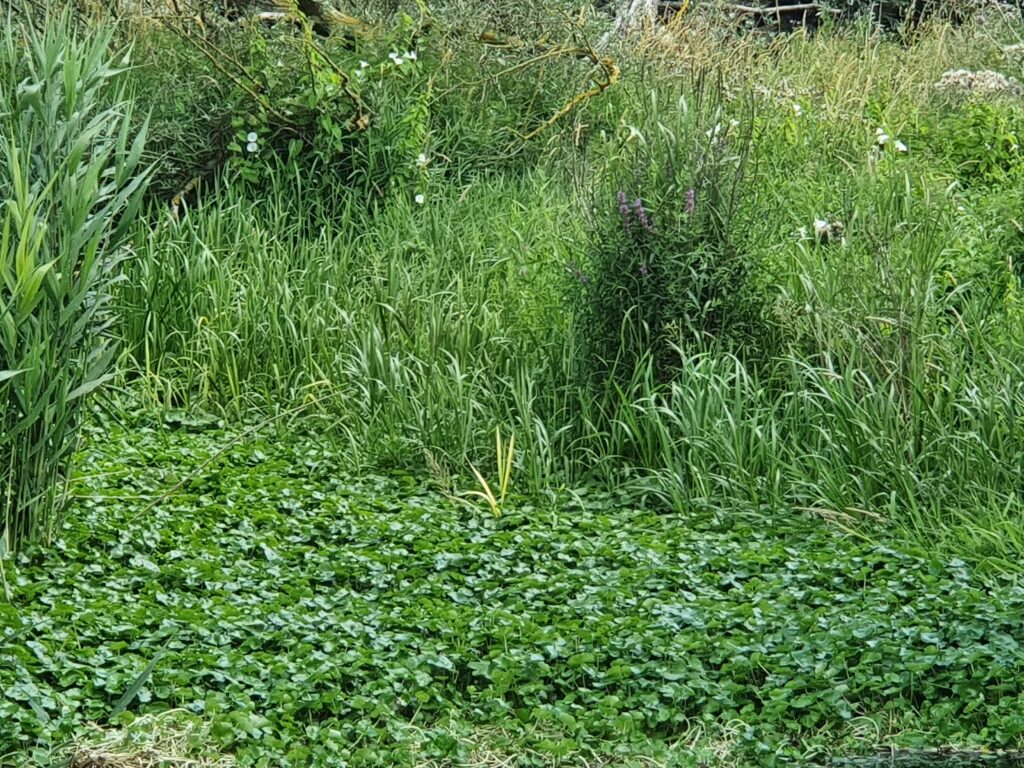
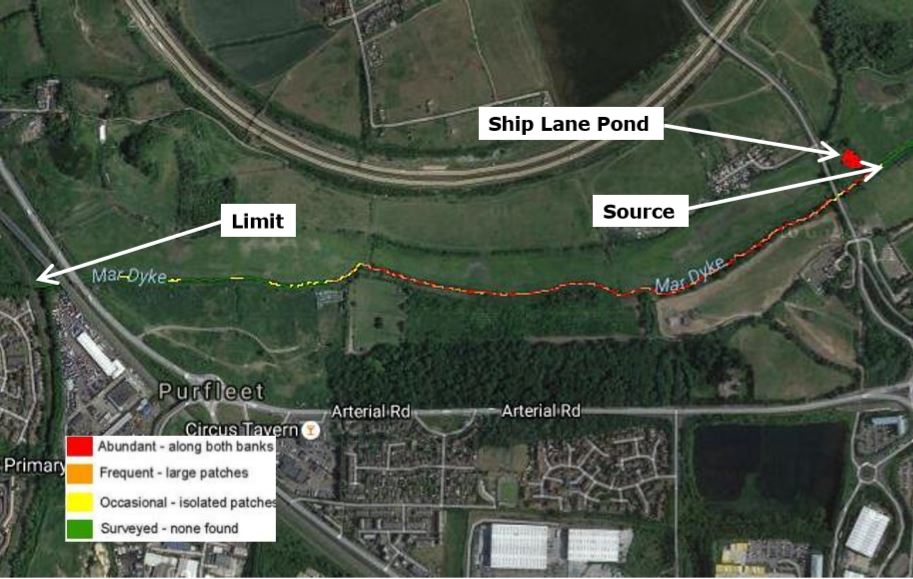
Map 1- pre management abundance
During this first year, repeated visits were made to the river, with a digger used to remove as much of the bulk of the plant as possible from the pond and downstream stretch of the river. This lead to significant visible reduction in the density of floating pennywort on the water. However, with the plant capable of growing up-to 20cm per day, it was incredibly important that the project did not finish there. Funding from the Essex and Suffolk Water Branch Out fund, allowed a much needed second year of management to take place during 2021. Over the course of this year, monthly visits to the pond & river have been made to physically remove patches of the plant and treat areas with herbicide. This has led to the amount of floating Pennywort being found in the pond and along the river in October 2021 being approximately 75% less than that found in October 2020.
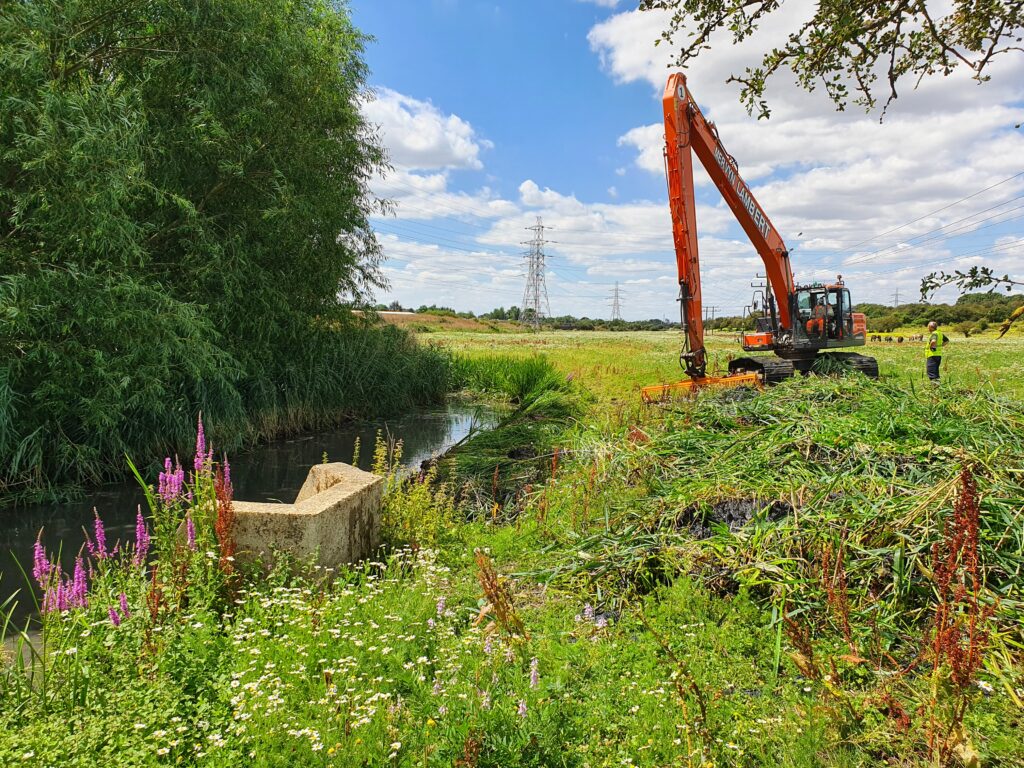
Thanks to funding from the Anglian Water Flourishing Environment Fund, plans are already underway to continue this management regime into 2022, when it is hoped that there will be an even greater reduction in the density of the invasive pennywort.
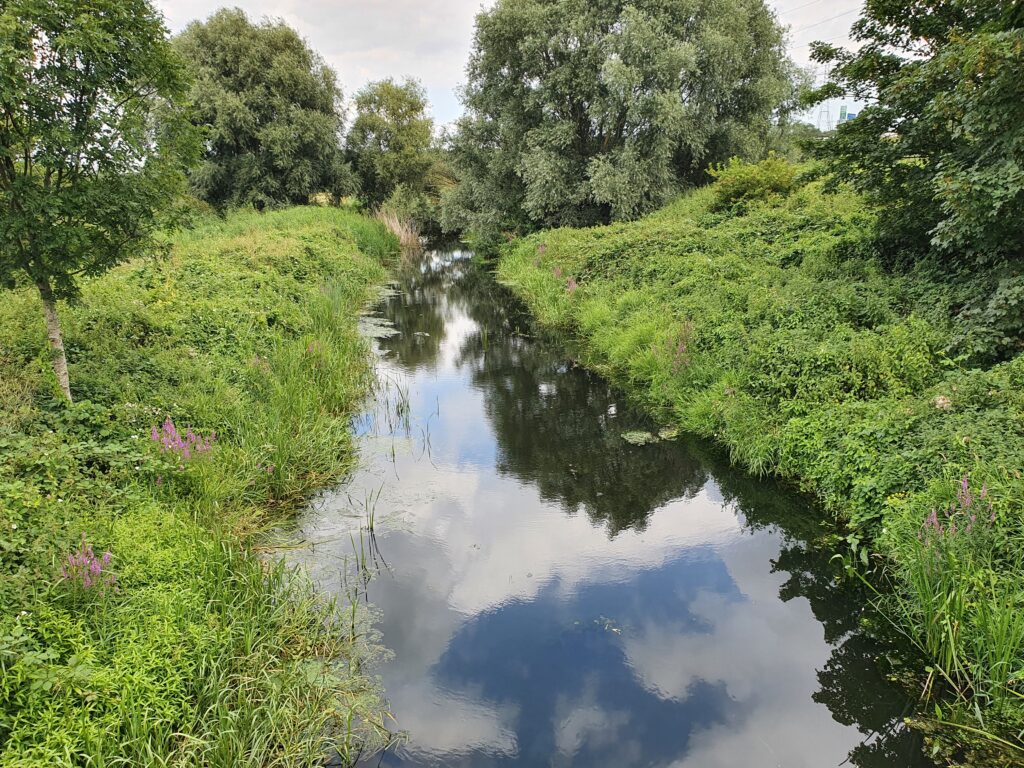
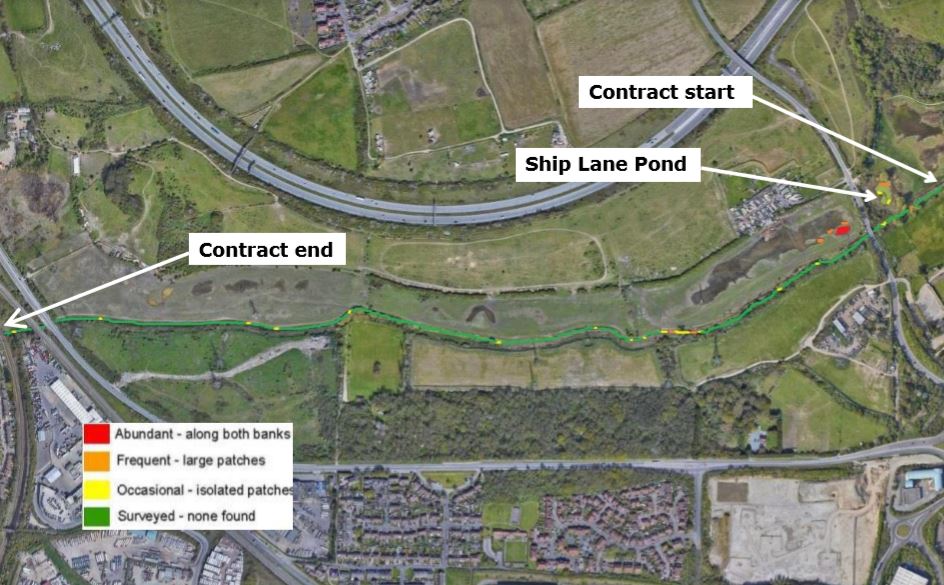
Map 2- post management abundance
As this project enters its third consecutive year of management, the importance of securing funding for future additional years becomes even more acute. With the plant able to quickly establish itself from seemingly insignificant fragments, even the smallest of patches can lead to significant problems within a few years. Working closely with its various partners, the South Essex Catchment Partnership aims to secure the long term future of this management regime in order to maximize the chances of eradicating floating pennywort from the River Mardyke.
Huge thanks go to the Land of the Fanns Partnership Scheme, Essex and Suffolk Water and Anglian Water for funding this ongoing project, and to Paul and Michael of Native Landscapes for putting in the hard work!
What can you do to help?
Anyone who interacts with a river, pond or lake (be it through kayaking, fishing, or simply walking their dog) has the potential to spread damaging invasive species. Stopping the spread of invasive species is a responsibility that therefore falls on all of us. Make sure that before taking a trip to your local waterway, you followed the advice to ‘Check, Clean & Dry’ any boots and equipment. To learn more about Invasive Non-Native Species (INNS) in the South Essex catchment, explore the ‘Threats to Our Catchment’ page of the South Essex Catchment Partnership Action Plan.
Will Oliver
Thames21 Catchment Partnership Development Officer
South Essex Catchment Partnership Co-Host



